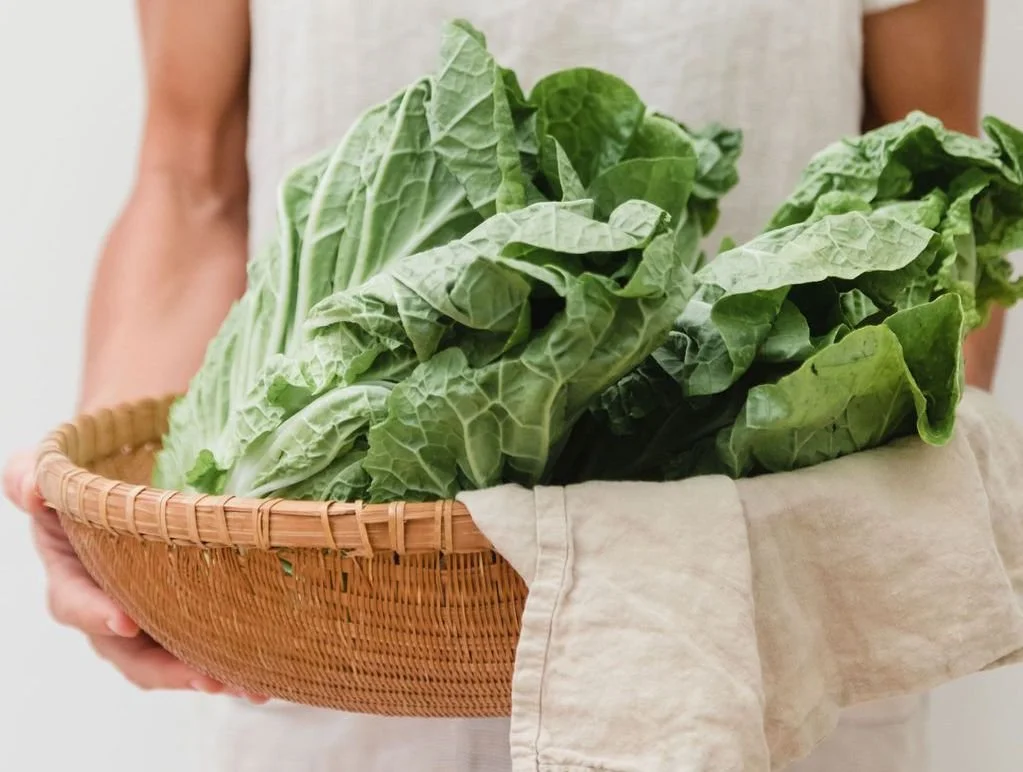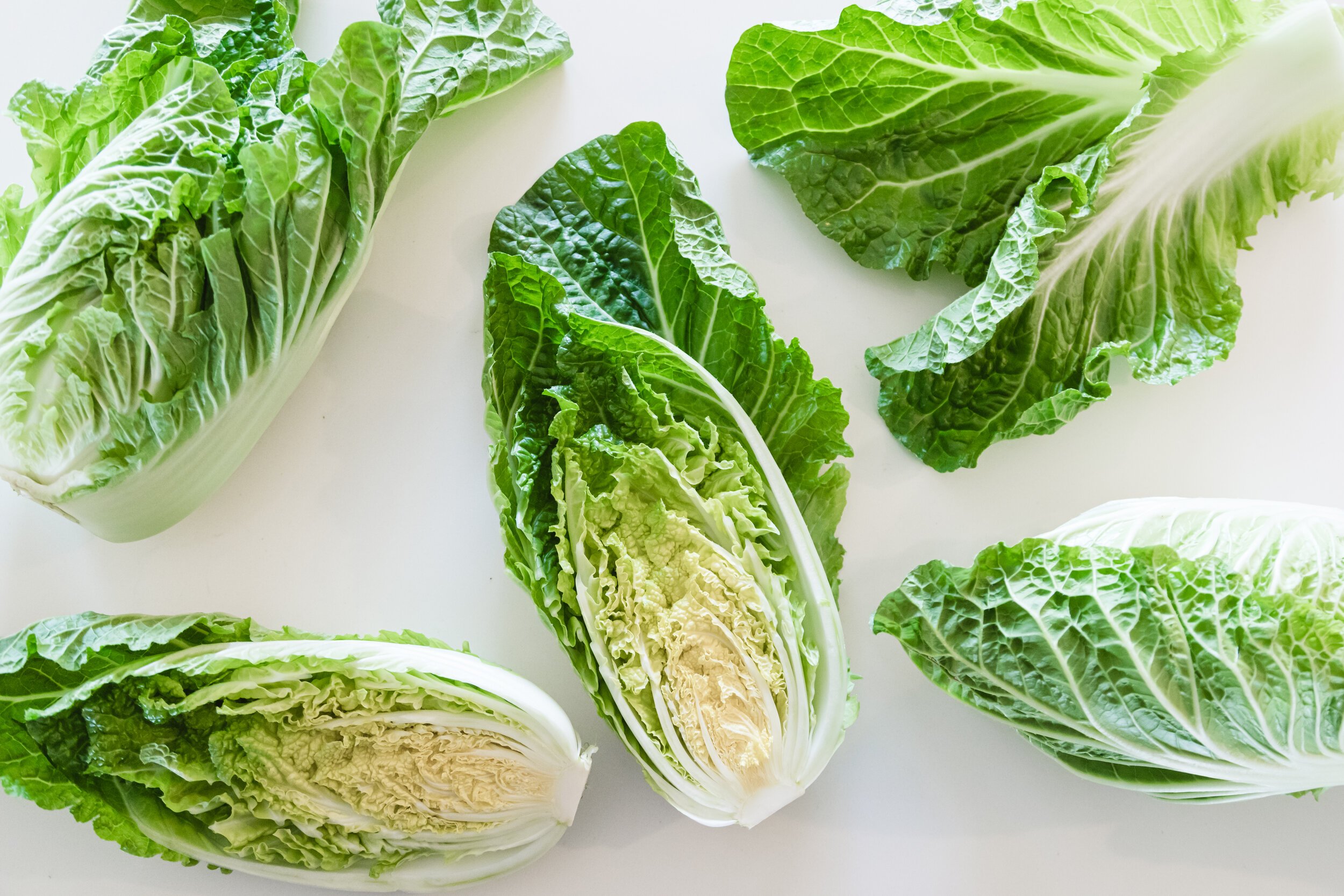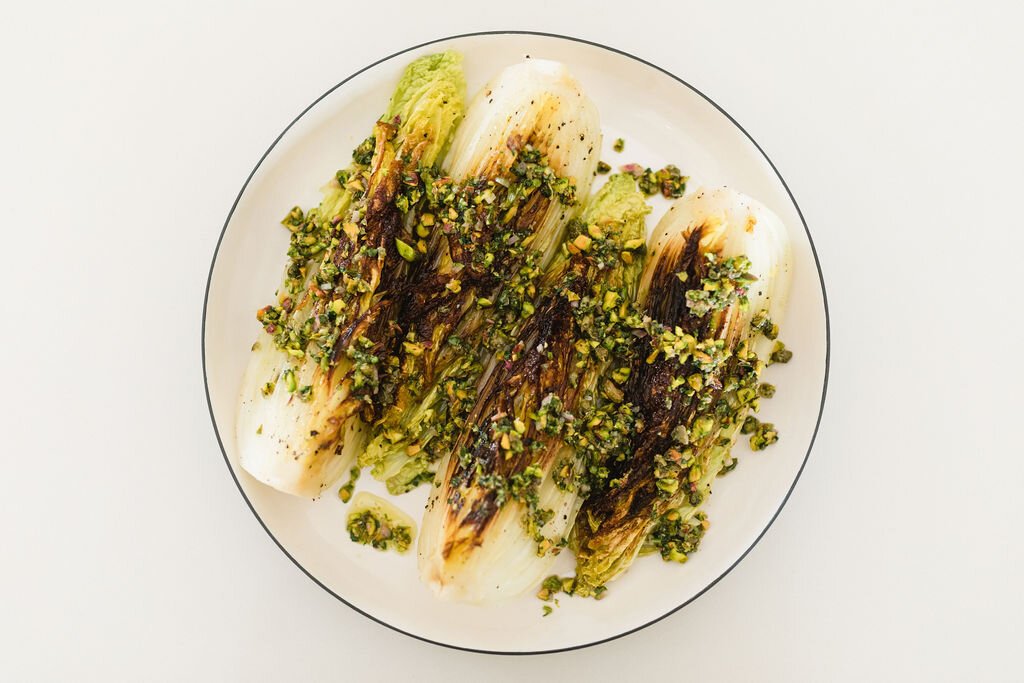All cabbages are members of the Brassicaceae family, but napa stands out with an unusually proportioned head and unique taste.
The leafy green is easily recognized by its oblong shape and enjoyed for its mild sweetness.
Napa cabbage also provides a healthy lineup of nutritional benefits and serves well in a variety of recipes.
Read on, and fill your plate with all the reasons this premium vegetable belongs in your refrigerator's crisper drawer.
What Is Napa Cabbage?
Let's get started by wrapping up interesting facts about napa cabbage.
Origins
Food historians believe the vegetable's roots date back as far as the 15th century. It was an important staple grown in fields up and down the Yangtze River in China. Over the next few hundred years, the cabbage migrated to Korea and Japan. By the 19th century, napa cabbage was enjoyed worldwide.
Name
It's easy to associate the cabbage with a famous valley and wine country in northern California. However, the cruciferous plant takes its name from the Japanese word napa, which translates into "vegetable leaves." Napa's botanical name is much longer: Brassica rapa varietas pekinensis.
Appearance
The elongated head is easy to find in the produce section of most grocery stores. From base to tip, the cabbage averages 12 inches and usually weighs around 4 pounds. Its pale-veined, lime-green leaves wrap snuggly around the white stem.
Cultivation
Typically, napa is harvested by hand two to three months after planting. California's fertile Salinas Valley produces some of the country's finest premium napa cabbage year-round.
Taste
Napa cabbage tastes slightly sweeter than green or red cabbage. The mild flavor blends well with Asian-inspired dishes, from kimchi to wonton soup. Its tender crunch makes it a favorite ingredient in recipes as varied as slaws, frittatas and sheet pan entrees.
5 Great Benefits of Napa Cabbage
Entrees, sides and salads made with napa cabbage take on special flavors and textures. Each delicious dish is even better when you add up its bounty of health benefits. These are just a few examples.
1. Strong Bones
The cabbage contains essential minerals that keep bones healthy and help prevent osteoporosis.
2. Healthy Hearts
Napa cabbage fiber helps lower bad LDL cholesterol levels and supports cardiovascular health.
3. Better Digestion
Because it's a fiber- and water-rich vegetable, napa supports good digestive health.
4. Improved Eyesight
The beta-carotene in napa converts into vitamin A, which helps support better eye health.
5. Weight Management
Low-cal, low-carb napa is an ideal veggie for incorporating into weight-management diets.
How to Use Napa Cabbage
In addition to its multiple health benefits, napa cabbage offers a mouthwatering range of recipe potential. Let's round up the best ways to make the most of every head.
Prep and Store It Right
Start by choosing the best premium napa cabbage. A fresh head feels heavy for its size, and its unblemished leaves wrap tightly from base to tip. Fresh napa also has a pleasantly fresh fragrance.
You don't need to wash the cabbage before storing it. Keep it covered with plastic wrap in the refrigerator's crisper drawer until you're ready to use it. Trim off leaves as needed, and then rinse and drain.
If you're prepping a recipe that calls for the whole head, simply slice it into quarters or bite-size chunks, wash, and then drain in a salad spinner. Napa will keep for at least two weeks in the fridge.
Enjoy Napa Cabbage Raw
Crispy-tender napa is ideal for recipes that call for raw cabbage. The crunchy green complements flavors in all types of slaws and salads. Its leaves are perfectly sized for veggie wraps and make tasty stand-ins for flatbreads and tortillas.
Napa leaves serve as a great garnish too. Gently torn, they make a tasty substitute for lettuce on burgers. Stacked, rolled and sliced, the flavorful greens transform into an elegant chiffonade.
Napa cabbage hearts are especially handy when transformed into edible serving bowls.
Get Creative With Cooked Napa
If a recipe includes cooked cabbage, reach for the napa. Its tender leaves add texture and flavor to soups and stews. You can grill, braise and bake the leafy veggie. It's a favorite ingredient in Asian stir-fries, spring rolls, and dumplings.
For a creative twist, you can even try pan-seared napa cabbage with bagna cauda and parmesan, which pan-sears napa cabbage to bring out its sweetness and pairs it with a garlicky Italian sauce and a sprinkle of parmesan.
While fermenting isn't technically cooking, the pickling process opens up a world of different ways to use napa cabbage. For example, fermented napa is an essential ingredient in classic kimchi.
It's also a delicious alternative to green cabbage in traditional sauerkraut.
Impress With Fresh Napa Recipes
Purple Napa Salad
Easy prep puts this chopped napa salad on the table in 20 minutes. A tangy champagne vinaigrette keeps it on the menu of best new salad recipes. Richly-hued purple napa is sure to inspire photogenic shares.
Tossed Citrus and Napa Hearts
Make lunch or dinner memorable with an entree salad that pairs citrus flavors with mildly sweet napa cabbage hearts. Avocados and sugar snap peas add to the medley of flavors and textures.
Top with a miso vinaigrette, and enjoy your guests' compliments to the chef.
Napa Cabbage Sauerkraut
Explore a deliciously different sauerkraut recipe by crafting your own with napa cabbage. This unique take on fermentation adds the earthy flavor of fresh turmeric root and the bright colors of carrots and green onions
Napa and Chicken Wonton Soup
This classic Chinese dish fills the bowl with a special type of comfort food.
The irresistible dumplings are stuffed with chopped napa, mushrooms and chicken. Rice wine, sesame oil and oyster sauce make the filling extra flavorful.
Gourmet Grilled Napa
It can serve as a simple side or a sophisticated entree. Grilled napa cabbage complements all types of main dishes. Dress it up with capers and roasted pistachios, and you create an elegant entree that tastes as good as it looks.
From Our Families to Yours
Napa cabbage is always an excellent choice for the crisper drawer. Year-round availability, great taste and healthy benefits make the leafy vegetable a favorite in home and professional kitchens.
Regardless of where you enjoy cooking, you have our commitment to supplying the freshest napa cabbage along with the finest premium produce available.
From our families here at Hitchcock Farms to yours, we're proud to always serve you with our very best.
Where can I buy napa cabbage?
Napa cabbage can be purchased at most grocery stores, and it's available year-round. You'll find it in the produce section. It may be labeled "Chinese" cabbage.
How do I select the best napa cabbage?
Fresh napa cabbage heads are oblong and wrapped in ruffled, bright green leaves with bright white ribs. The head should feel heavy for its size, and it should give off a pleasant, clean fragrance.
What can you substitute for napa cabbage?
Napa cabbage is unique in flavor and texture, but there are vegetables that can be substituted for fresh napa. Depending on the recipe, you can try endives, kale or savoy, red or green cabbage.
How do I store napa cabbage?
Wrap the cabbage in plastic, and keep it in the crisper drawer until you're ready to use it. Don't wash it before storing, and don't crowd it with other vegetables in the refrigerator.
What is the difference between napa cabbage and regular cabbage?
While napa and regular cabbage are similar, napa is slightly sweeter. It becomes more tender when cooked, so it's a preferred ingredient in many Asian dishes. The napa cabbage heart is also a flavorful addition to recipes. Purple napa cabbage puts dramatic color into salads, sides and entrees.








